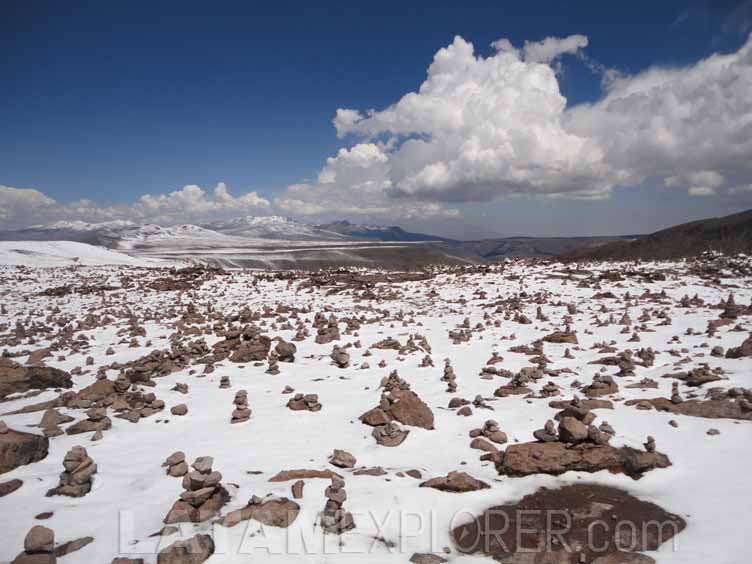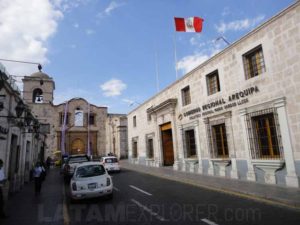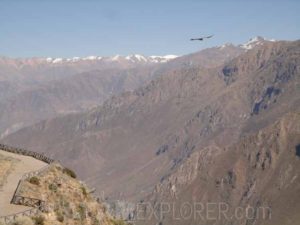Home > Destinations > Peru > Arequipa
Arequipa and the Colca Valley, Peru
Arequipa is the second largest city in Peru, second only to Lima, and along with Nazca, Puno and Cusco, forms the southern tourist corridor of the country. Founded in 1540, Arequipa became capital of Peru between 1835 and 1883. Known as the "white city", it hosts a historic center filled with buildings built in a unique blend of colonial and republican styles that are a World Heritage site declared by UNESCO.
Downtown Arequipa is located at an altitude of 2,380m (7,800ft) and is surrounded by several volcanic cones, including the Misti Volcano that, at 5,822m (19,100ft), dominates the urban landscape. The city center is compact and virtually flat, making it ideal to be explored on foot. The Plaza de Armas, in the heart of the city, is surrounded by buildings made of ashlar, a white volcanic stone. Arequipa's Cathedral is a beautiful religious monument whose current design was conceived in the seventeenth century and rebuilt in the nineteenth century after a serious fire. The original structure, built shortly after the founding of the city, was devastated still in the sixteenth century by an earthquake and even the current structure of the church had to undergo various repairs due to the intense seismic activity of the area, most recently in 2001 when one of the towers collapsed after an earthquake measuring 8.1 degrees on the Richter scale.

The Monastery of Santa Catalina, located two blocks from the square, is a kind of mini-walled city, with its own streets, courtyards and squares, and is one of the most visited places in Arequipa. It was built in 1579 and expanded throughout the seventeenth century. At its peak, it came to house 450 people in cloistered regime. Also in the center of Arequipa, immediately south of the central square, the Andean Sanctuaries Museum houses the mummy known as Juanita, a woman possibly killed as an offering of the Incas, found in 1995 at the Nevado Ampato mountain, close to town.

The Chili River runs through the city from north to south and some of the bridges that cross it are attractions by themselves, such as the Bolognesi Bridge, just three blocks west of the Plaza de Armas and the Fierro Bridge, built in steel as projected by Gustave Eiffel. The west side of the river has at least two other very interesting attractions. One of them, near the Bolognesi Bridge is the Recoleta Museum and Monastery. This is a great historical museum, usually off the radar of most visitors to the city. Nearby, the Yanahuara district is a good place for a pleasant walk and offers a lookout point with great panoramic views over the city and on to the Misti.

The Misti volcano itself is often a popular attraction in the outskirts of the city. The climb to its summit is usually done on a 2 days trekking (which does not require actual climbing) with overnight stay in a camp about 4,600m (15,100ft) above the sea level. Prior acclimatization is recommended considering the lower availability of oxygen at that altitude.
The most popular destination in the vicinity of Arequipa however, is a little further away. Although theoretically feasible on a day-tour, the Colca Valley deserves a little more time to be explored; say at least 2 days. To start with, the journey between Arequipa and Chivay, the main town of the Valley, 160km (100mi) away, is an attraction on its own. Cutting through altitudes close to the 5,000m (16,400ft), as in the pass known as the Mirador de los Volcanes (Volcanoes Viewpoint), often covered by a layer of snow, the road also runs through pastures inhabited by llamas and alpacas, besides other exotic locations.

Chivay itself is a small but pleasant town, offering the largest number of accommodation options nearby. This is the gateway to the Colca Canyon, one of the deepest and most beautiful in Peru, reaching a depth of 3,400m (11,150ft) and stretching for about 100km (60mi) along the valley of the Colca River. This canyon is a privileged place to observe the condor, the most representative bird species of Peru, which can reach a wingspan of 2.80m (9'2").

From Chivay, or from Arequipa, you can then travel to the city of Puno, on the shores of Lake Titicaca, on a 275km (170mi) trip from Chivay or 310km (190mi) trip from Arequipa; buses should take 5h in both cases. Cusco, the main tourist destination in the country and gateway to the Sacred Valley of the Incas, is 490km (305mi / 9h) northeast of Arequipa, while the city of Tacna, near the border with Chile lies 370km (230mi / 5h) south. The national capital, Lima, is 1,010km (625mi) northeast of Arequipa, covered in about 15 hours by bus, or just over 1 hour by plane.














